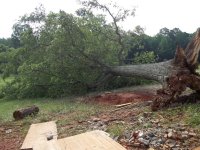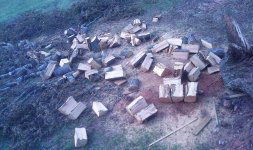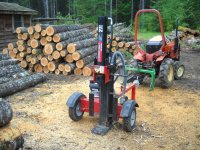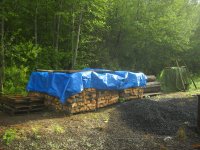I also dont doubt this masonry stove idea, i undersand it but how can a one hour fire heat some massive rock hot enought to heat a house with a short one hour fire? Unless your burning pine fat lighter i fail to see it. If i burn my stove wide open all drafts open in bypass mode to heat the cats up to light off it will take maybe 45 mins to get them to 500 degrees where they will light off their self.
The masonry stoves I know are better suited to area heating... normally they are found in the wall separating the entry area/foyer and livingroom...
The fire burns longer than an hour... it is just the first 45 minutes to an hour till it burns down to embers/coals and then the airtight door is closed and the heat noticeably increases if the timing on closing the door is right... too early and the wood will not completely burn and too late and all the wood burns with little to know residual heat... it's almost like a reactor meltdown when the chamber is sealed full of hot coals at the right moment.
Wood is almost 100% hardwood and typically seasoned 2 to 3 years... in stacks as shown in the poster's pictures.
They do an excellent job of comfort heating those areas... kitchens in these homes are often dual fuel... like an old wedgewood stove... wood and electric or wood and gas.
So they really do not heat the entire house and any area with closed doors will be cold... most of the Europeans I know do not really heat their bedrooms in the deep of winter much... this is where the feather beds and thick down comforters come in to play.
There are many enhancements that can be made... I have seen masonry stoves with copper loops inside to heat water that is then used as hot water or more often as part of a radiant underfloor or radiator heat system... again, not really for the entire house but as an adjunct to warm a bathroom floor or maybe the to take the chill off the bedrooms. A tile floor that is 60 degrees is very comfortable in the depths of winter.
Most home have several different ways to heat and I have never seen forced air in any situation... almost always radiant with a variety of fuels... wood, coal, oil, natural gas and propane with electricity being last except for domestic water... most hot water heaters that are electric use "Night" electricity because it is as much as 40% cheaper in the wee hours of the morning so the water is heated only at night for use during the day... the heaters are typically 80 to 120 gallons... for spot use, point of use electric water heaters are used for the few gallons needed to wash dishes.... washing machines are like dishwashers and they heat the water as needed from only a cold water inlet.
It goes without saying that windows are highly efficient and nearly always triple glaze.




